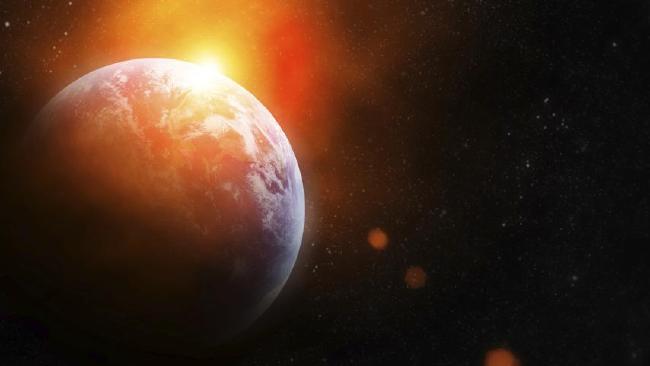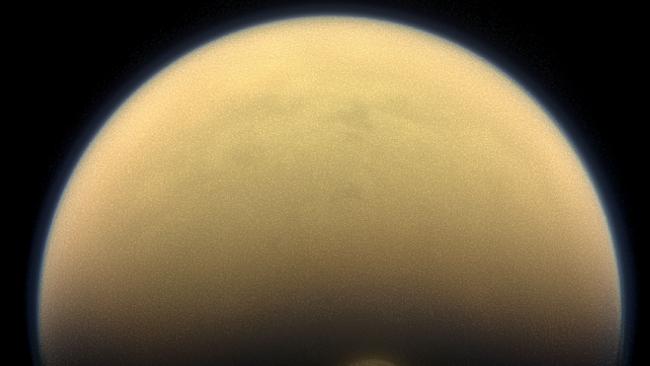Solar System: Secrets of the Universe86:32

How far into the solar system will we have reached by 2057? Travel decades into the future to see what life could be like on the International Space Station, where astronauts control robots on every planet, sending back 3D images of the galaxy.

Scientists have uncovered evidence of a “giant impact” that had a devastating effect on planet Earth.
SCIENTISTS have uncovered evidence of a “giant impact” that had a devastating effect on Planet Earth.
The cosmic collision is thought to have occurred 4.5 billion years ago and was so dramatic that it formed the moon and left Earth with day lasting just two hours.
Scientists have long debated the circumstances which led to the formation of our satellite.
One theory assumes the proto-Earth experienced a low-energy impact but new research backs the second hypothesis that there was a much more violent collision.
The latest computer model says there was a high energy collision which left a mass of vaporised and molten material from which the Earth and Moon formed.
The Earth was set spinning with a two-hour day — its axis pointing towards the Sun.
This explains why both bodies are made of virtually the same stuff.
That makes the moon distinct from every other major object in the Solar System.
Professor Sarah Stewart, of California University in Davis, said: “Every other body in the solar system has different chemistry.”
In the deep and distant past, Earth was set spinning with a two-hour day — its axis pointing towards the Sun.
The material from Earth and the impactor would have mixed together — and both Earth and Moon condensed from the same material and therefore have a similar composition.

The cosmic collision is thought to have occurred 4.5 billion years ago.Source:ThinkStock
The textbook theory of lunar formation says a Mars-sized object grazed what would become Earth — throwing off a mass of material from which the moon condensed.
This impact set the angular momentum for the Earth-Moon system and gave the early planet a five-hour day.
Over millennia the moon has receded from the Earth and the rotation has slowed to our current 24-hour day.
But there are a couple of problems with this. One is the moon’s surprisingly Earth-like composition.
Another is if the moon condensed from a disk of material rotating around Earth’s equator it should be in orbit over the equator.
But the moon’s current orbit is tilted five degrees off the equator -meaning some more energy must have been put in to move it.

Both Earth and Moon condensed from the same material and therefore have a similar composition.Source:AFP
The alternative theory says as angular momentum was dissipated through tidal forces the moon receded from the Earth until it reached a point called the ‘LaPlace plane transition.’
Here a transfer of angular momentum caused Earth’s axis to tilt perpendicular to the Sun.
This is where the forces from the Earth on the moon became less important than gravitational forces from the Sun.
This caused some of the angular momentum of the Earth-Moon system to transfer to the Earth-Sun system.
This made no big difference to the Earth’s orbit round the Sun — but it did flip Earth upright.
At this point the models built by the team show the moon orbiting Earth at a high angle — or inclination — to the equator.
Over a few tens of million years the moon continued to slowly move away from Earth until it reached a second transition point — the Cassini transition.
The inclination of the Moon — the angle between its orbit and Earth’s equator — dropped to about five degrees putting the moon more or less in its current orbit.
Prof Stewart said the new theory elegantly explains the moon’s orbit and composition based on a single, giant impact at the beginning, Stewart said. No extra intervening steps are required to nudge things along.
She said: “One giant impact sets off the sequence of events.”
This story first appeared on The Sun.







